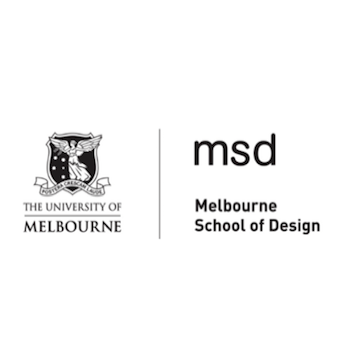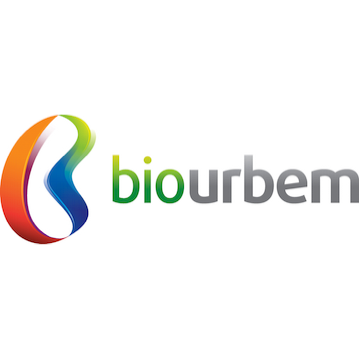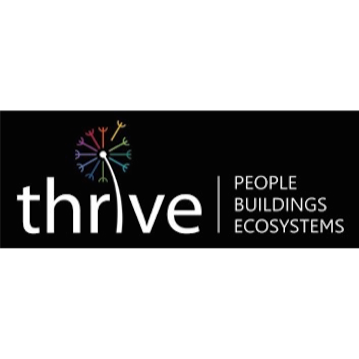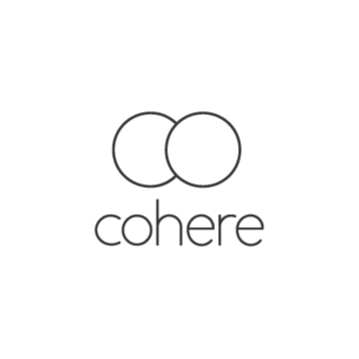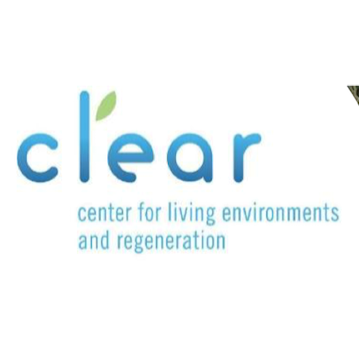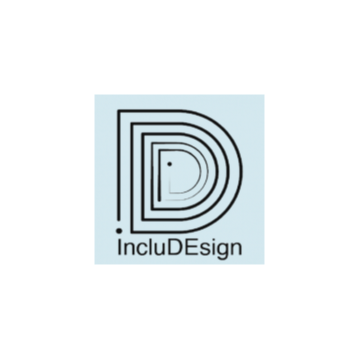Purano Jhangajholi Education Centre
In Purano Jhangajholi, a village in Sindhuli Nepal, teachers and students were studying in temporary bamboo shelters after the school was destroyed in the 2015 earthquake. Embracing the concept of true equity, FONA’s idea was to create a world class, inspiring school that would also serve as a community hub bringing infrastructure and services to the whole village. Our vision was to set a new standard in education and community infrastructure design.
Image courtesy of ©incluDesign 2016
Creating Global Local Villages
We’re creating a beautiful and inspiring community hub for learning and development for all the community. The facility is world class both in its built form and the programs and services run through it, with a focus on applied learning in agriculture, technology and innovation.
It will result in a globally-connected and sustainable village, providing equitable access to education that applies the latest pedagogical models and thinking.
Through skills training, capacity building, mentoring and access to markets, this model will support the village community to shift from subsistence to independence, to start new businesses and grow new industries.
STRATEGIC OBJECTIVES OF THE EDUCATION CENTRE
- Provide access to applied, technology-enabled education to year 12 and beyond
- Build capacity through education, skills training and community programs
- Create beautiful spaces to inspire learning, cultivate community and value local wisdom
- Transition from traditional teaching to best practice learning methodologies
- Create benefits in health, sanitation, water, energy, environment, culture, commerce
- Connect communities to the world through technology, collaboration & knowledge sharing
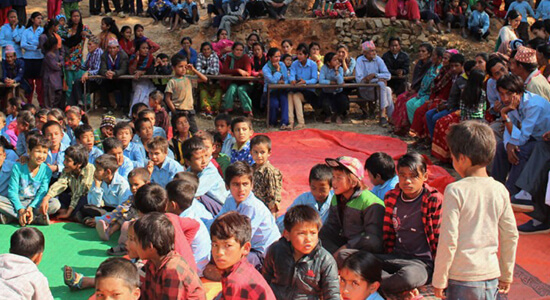
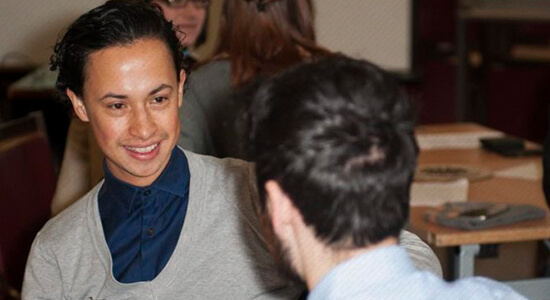
THE DESIGN PROCESS
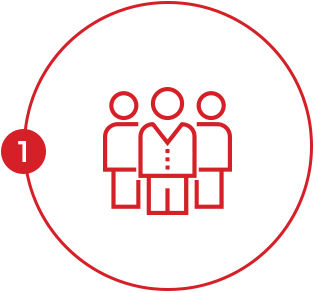
The University of Melbourne and IncludDesign led a community consultation, seeking to understand the hopes and dreams of the community and to understand what they felt was important, to harness the natural strengths and address any challenges in the design.
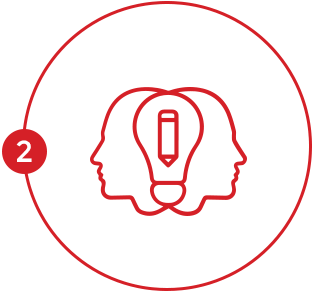
FONA & University of Melbourne hosted a “think tank” with partners IncludDesign, Cohere, Thrive Research Hub, and Biourbem. Village representatives were present as were experts including designers, architects, engineers, heads of social enterprise, sustainability & regenerative design, educators, academics & positive psychologists.
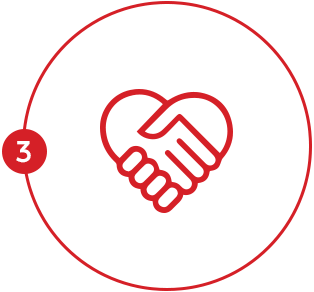
The final master plan was presented to the community, followed by a celebration involving cultural ceremony and performance. Above you can see children excited to see themselves in the future state of their school.
Imagine a child who put pen to paper and drew their vision for their school. Now imagine their vision becomes a reality. That is so powerful as they've just learned they can play a major role in their own destiny.
- Angelica Rojas Gracia, PhD candidate University of Melbourne & co-founder IncluDesign
FEATURES OF THE MASTER PLAN
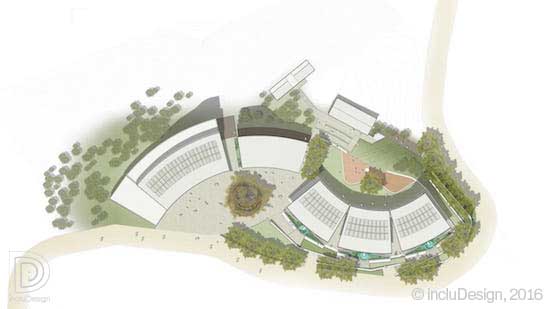
- Infinity shape mirrors the flow of the site.
- To the left, a library and community centre for vocational training, business incubators and community programs.
- Sacred Peepal tree at the centre.
- To the right, 3 blocks of classrooms including a technology lab, science lab and flexible use classrooms.
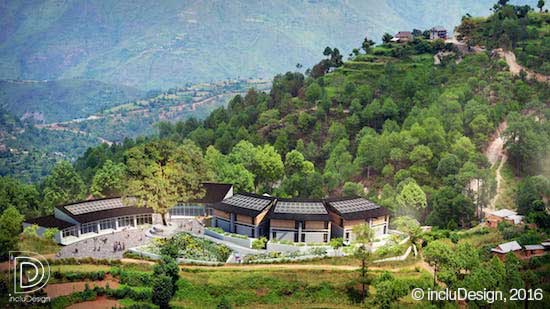
- Buildings are in harmony with the natural environment, taking advantage of the beautiful views.
- Manicured landscape to improve safety and stability on the steep site.
- Materials selected to restore community confidence in the use of traditional materials such as stone and mud, and introduce some steel and concrete for earthquake resilience.
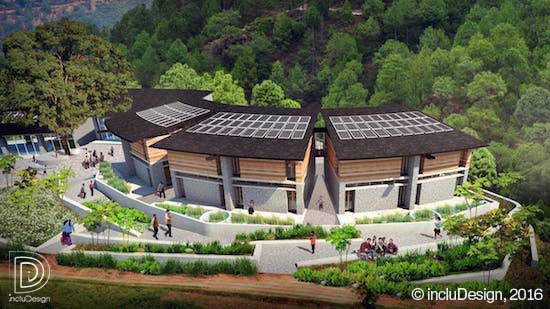
- Solar panels provide sustainable energy solution from sunlight.
- Innovative water harvesting and rain garden filtration system designed by Biourbem provide safe drinking water.
- Biogas waste management system provides safe sanitation and waste management and clean gas for cooking in the canteen.
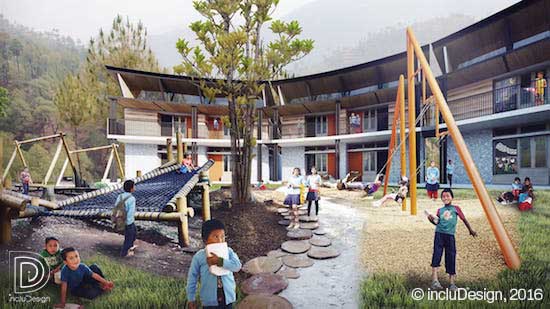
- Play area builds on the challenge of a steep site, for fun, exploration and physical challenge
- Space for outdoor and agricultural learning.
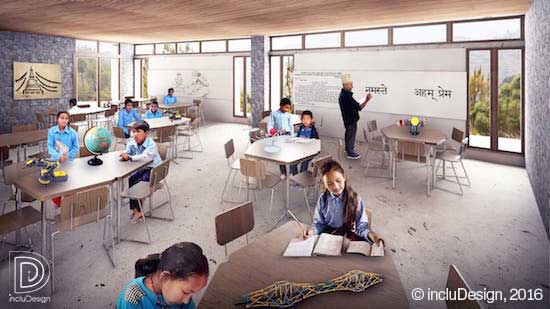
- Technology-enabled classrooms, including dedicated computer and science labs.
- Implementing the Benefit Mindset education model - project based learning and cross-generational programs.
- Optimal spaces for students to express their creativity and apply their learning.
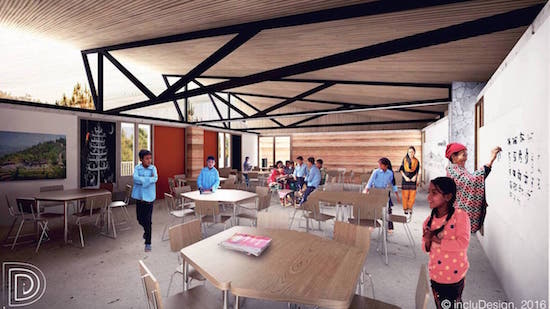
- Flexible spaces with operable walls, to transition between traditional and future pedagogical models.
- Multipurpose spaces for business incubators and community education programs..
- Common room for teachers and health post.
THE BENEFITS OF COLLABORATIVE DEVELOPMENT
This project is part of research into the benefits of a collaborative development process, in partnership with the University of Melbourne. This research is being implemented into the design process by architects, incluDesign.
Evidence shows that involving people in a design process, from pre-design through to design development, construction and operational management stages creates a sense of stewardship and ownership of the project. Also, a key part of this research is to show that when people who have experienced tragedy are invited to participate in setting the vision for the future, and then they see their vision become a reality, it reinforces their confidence to drive projects through and create new opportunities.
The consultation process illuminated the many strengths and potential that already existed in the village.
Our whole systems approach to the design, thinking beyond the building to other benefits that could be created, will have a transformational impact on this community.
If I go to this school and study, can I grow up to become a doctor or an engineer, just like you?
- Young boy from the village asked during the consultation program
How You Can Help
We have a fundraising target of $1 million to construct the centre and start to introduce new learning models and community programs in the facility.
To give you an idea, it will cost (approximately):
$20,000 to build one standard classroom
$10,000 to fit out a computer or science lab
$8,000 to build a challenge playground
$150 per month supports the salary of an IT teacher
Construction of the Purano Jhangajholi Education Centre will start in 2017. You can contribute significantly to the process:
- Make a tax deductible donation or consider other ways to give
- Share this page
- Talk to us about opportunities for corporate sponsorship or partnership
In this process, we have inspired the next generation to dream of new possibilities. By connecting the village to the world, we have created hope out of a tragedy and ripple effects beyond those I could have imagined.
- Amit J Thapa, FONA chairman
